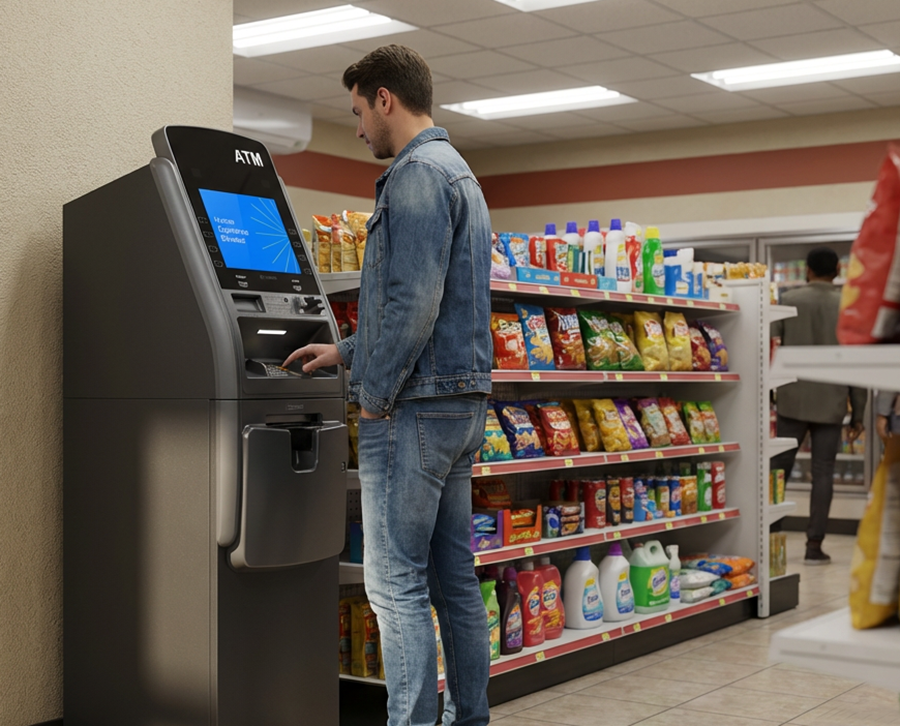The Rising Risks and Costs of Credit Card Transactions for Retailers
BFC Enterprises • February 25, 2024
Despite the dominance of cash as the payment method of choice for small-dollar purchases, consumers are still enamored of the “convenience” they get with credit and debit cards. Unfortunately, those same payment methods often come at a steep price for retailers.

As fraud attempts rise exponentially and processors hike their fees, the true cost of accepting plastic continues to grow every year. Let's break down the key expenses and risks retailers take on with each consumer card swipe.
Card Fraud Takes Off!
Do you know what country accounts for nearly half (46%) of global credit card fraud? The United States. And these fraud losses are anticipated to
exceed $12.5 billion by 2025. You might wonder how that could possibly be the case. Well, the US is one of the only countries that still utilizes the mag stripe on the back of debit and credit cards, despite EMV technology being nearly ubiquitous throughout the states.
Why does that matter? Because
80% or more of worldwide credit cards have been compromised. And the easiest way to duplicate a card and commit fraud is to throw on a fake EMV chip and code the mag stripe.
“Oh no, Mr. Retailer, I don’t know why my EMV chip isn’t working!” No worries, go ahead and swipe it. Boom! A fraudulent card goes through as a legitimate transaction. That is until the card company or the consumer recognizes the bad card swipe and kicks it back. Suddenly, the merchant is stuck eating the charge despite the merchandise having walked out the door.
But what might be even more surprising for retailers is that fraudsters rarely go for the big money with stolen credit and debit card data. Rather they tend to target small transactions, usually under $100. Those small-dollar criminal purchases now make up 55% of all fraudulent card use. This means convenience stores, grocery stores, dollar stores, and other such retailers are the prime targets – and the ones racking up the most loss.
Compliance Costs – Another Expense Hitting the Bottom Line
One of the ways the networks are working to protect consumers (and merchants) from fraud is through the
Payment Card Industry (PCI) compliance standards. These requirements address everything within the card payment landscape including transmission encryption, processing, and storage of data as well as physical cards and equipment.
But, while PCI compliance helps protect the payments system, staying compliant can come at a cost. These security standards often require updated equipment and, on the payment processing end, quite a bit of code and systems updates. So, it’s hardly surprising that merchants end up footing some of the bill for that safety and security – commonly paying $79 to $120 yearly in PCI compliance fees. However, failure to meet requirements risks even heftier fees ranging from $10,000 to $100,00 or higher. While essential for security, these costs directly impact retailers' bottom lines.
Card Processors Protect Themselves – Costing Retailers Even More
Today’s payment landscape has generated some interesting new formats for processing charges to retailers accepting debit and credit cards. But, despite the changes to how merchants are charged, the overall costs are still going up – in large part due to added risks and regulatory costs.
Today most retailers have either tiered pricing or interchange-plus pricing models. The tiered pricing differs based on the type of transaction such as debit versus credit. The amount charged for each type of transaction is set by the individual processor.
Interchange-plus models, on the other hand, are based primarily on the interchange rates currently charged by the card networks. The processing company then takes that rate and tags on their own fees for handling the transaction – sometimes in addition to a monthly subscription fee. Overall,
credit card processing fees have risen over 20% since 2021, further squeezing retailers’ already thin margins.
Between fraud, compliance, and rising fees, retailers shell out far more than the basic processing costs to accept credit and debit payments. These compounding expenses can seriously impact cash flow, especially for small, low-margin businesses. So, what’s the solution?
Cut Costs with Cash Incentives
Ironically, one of the most effective ways to reduce credit card expenses is to encourage more cash transactions. But one of the best ways to ensure consumers can readily access and pay with cash is through an on-site ATM.
Streamlining checkout for cash also signals its acceptance, while posting cash discounts where permitted informs customers of the opportunity to save. In the end, the simpler cash model cuts risks and keeps money from falling prey to rising fees and card processing expenses. Mastering the hidden costs of card acceptance is quickly becoming a key component of retailers' financial health.
Discover how your business can leverage an
on-site ATM to help encourage cash and save money.
Contact
BFC today!


